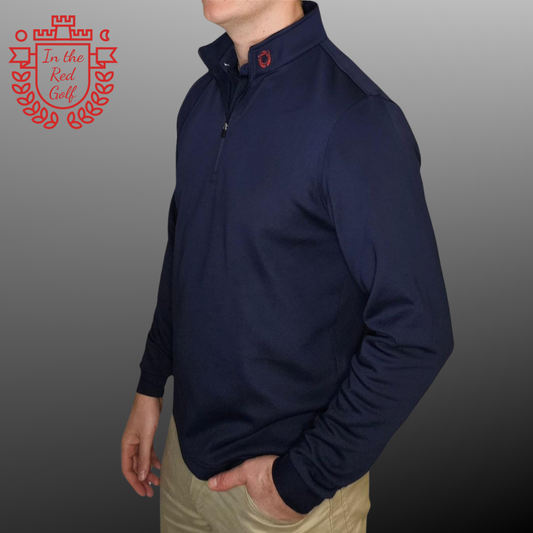Introduction
Putting is often considered the most crucial aspect of golf, where strokes are won or lost. A successful putt can save a round, while a missed putt can ruin even the best of games. Mastering putting requires a blend of technique, mental focus, and practice. This blog will guide you through the essential elements and provide practical tips to help you get better at putting in golf.
Understanding the Basics
1. Grip
The grip is your primary connection to the putter and plays a critical role in controlling the stroke. Here are a few common grips:
- Reverse Overlap Grip: The index finger of the left hand overlaps the fingers of the right hand.
- Claw Grip: The right hand is positioned with the fingers pointing down the shaft, resembling a claw.
- Cross-Handed (Left Hand Low): The left hand is lower on the grip than the right hand.
Experiment with different grips to find the one that feels most comfortable and provides the best control for you.
2. Stance and Alignment
Your stance should be shoulder-width apart, with your weight evenly distributed. Align your body parallel to the target line. Your eyes should be directly over or slightly inside the ball. This alignment helps you visualize the target line more effectively.
3. Ball Position
The ball should be positioned slightly forward of the center in your stance. This positioning ensures a slight upward strike, which promotes a better roll.
The Putting Stroke
1. Pendulum Motion
The putting stroke should resemble a pendulum motion, swinging back and through with minimal wrist action. The shoulders and arms should work together, creating a smooth and consistent stroke.
2. Tempo and Rhythm
Consistency in tempo is key to developing a reliable putting stroke. Practice maintaining a steady rhythm, ensuring that your backstroke and follow-through are of equal length and speed.
3. Follow-Through
A proper follow-through ensures that you’re accelerating through the ball rather than decelerating. Your putter should finish low and towards the target, indicating a solid stroke.
Reading Greens
1. Grain and Slope
Understanding the grain and slope of the green is essential for accurate putting. The grain refers to the direction in which the grass grows, affecting the ball's speed and direction. Slope influences the ball’s break. Spend time studying the green from different angles to gauge these factors.
2. Visualization
Visualize the path your ball will take to the hole. Imagine a line that accounts for the break and speed required. This mental image helps in aligning your putt correctly.
3. Practice Green Reading
Spend time on the practice green working on your green reading skills. Use alignment aids and tools to help you better understand how the ball reacts on different slopes and surfaces.
Developing a Routine
1. Consistent Pre-Putt Routine
A consistent pre-putt routine helps calm your nerves and focus your mind. This routine might include aligning your putter, taking practice strokes, and visualizing the putt.
2. Breathing Techniques
Incorporate breathing techniques to maintain calm and focus. Deep, steady breaths can help reduce tension and improve concentration.
3. Commitment
Once you’ve aligned your putt and visualized the path, commit to the stroke. Indecision can lead to poor execution.
Practice Drills
1. The Gate Drill
Place two tees slightly wider than your putter head apart. Practice stroking putts through the gate, focusing on a straight and consistent stroke.
2. Clock Drill
Place balls around the hole at different positions, like numbers on a clock. Putt each ball, working on your ability to read and adjust for different angles and breaks.
3. Distance Control Drill
Place a marker at varying distances from the hole. Practice putting to each marker, focusing on controlling the distance and speed of your putts.
Mental Game
1. Positive Visualization
Visualize successful putts. Positive imagery can build confidence and improve your performance.
2. Focus on the Process
Concentrate on the process of putting rather than the outcome. Focus on your technique, routine, and execution.
3. Stay Present
Avoid dwelling on past missed putts or worrying about future ones. Stay present and focused on the putt at hand.
Equipment
1. Putter Selection
Choose a putter that suits your style and stroke. Consider factors such as weight, length, and design. Experiment with different putters to find the one that feels best.
2. Ball Selection
Different golf balls have varying feels and rolls. Experiment with different balls to find one that complements your putting style.
Advanced Techniques
1. Green Mapping
Some advanced players create detailed maps of greens, noting slopes and grain patterns. This information can be invaluable during a round.
2. AimPoint Technique
AimPoint is a green-reading method that uses your feet to feel the slope and determine the correct line. It’s a scientific approach that can improve your green reading accuracy.
Common Mistakes and How to Fix Them
1. Poor Alignment
Use alignment aids like lines on your ball or putter to ensure proper alignment. Practice regularly to build a consistent setup.
2. Inconsistent Tempo
Work on maintaining a steady tempo by using a metronome or counting rhythmically during your stroke.
3. Deceleration
Focus on accelerating through the ball. Practice follow-through drills to ingrain this habit.
Practicing with Purpose
1. Set Goals
Set specific, measurable goals for your putting practice. Whether it's improving your success rate on 5-foot putts or reducing three-putts, having clear goals will guide your practice.
2. Track Progress
Keep a practice journal to track your progress and identify areas for improvement. Record your successes and challenges to help refine your practice routines.
On-Course Strategies
1. Manage Your Expectations
Not every putt will drop. Focus on giving each putt a good chance rather than expecting perfection.
2. Play to Your Strengths
Understand your putting strengths and weaknesses. Play to your strengths while working to improve your weaker areas.
3. Adapt to Conditions
Be aware of the course conditions, such as green speed and firmness. Adjust your putting strategy accordingly.
Building Confidence
1. Celebrate Small Wins
Celebrate your successes, no matter how small. Building confidence is crucial for putting success.
2. Learn from Misses
Analyse your missed putts to understand why they didn’t go in. Use this information to make adjustments and improve.
3. Stay Positive
Maintain a positive attitude, even during tough rounds. A positive mindset can help you stay focused and perform better.
Conclusion
Improving your putting in golf is a journey that requires dedication, practice, and mental resilience. By focusing on the basics, refining your technique, and maintaining a positive mindset, you can become a more confident and effective putter. Remember, even the best golfers continue to work on their putting, so stay patient and persistent. With time and effort, you’ll see significant improvements in your putting game. Happy golfing!




